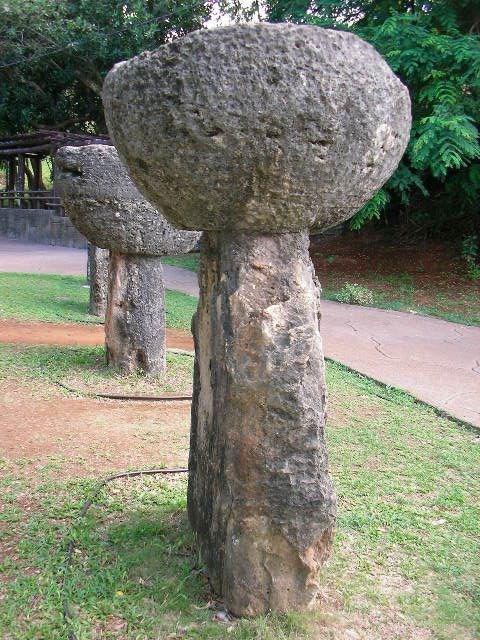Part of a series of articles titled Finding a Path Forward: Asian American Pacific Islander National Historic Landmarks Theme Study.
Article
Essay 9: Sites of Resistance to Imperialism

Photo by Hajime Nakano (CC BY 2.0; https://commons.wikimedia.org/wiki/File:Latte1.jpg)
In reflecting upon the theme of national historic sites and landmarks of "resistance to imperialism" in relation to Pacific Islanders and Asian Americans, it is important to acknowledge the layers of complexity and contradiction that exist because of the role that the American settler state plays as the imperial power and the object of this resistance. This is further complicated by the role that the American settler state plays as the entity that anoints a site as having a significant role in the national history of the US. The American settler state disrupted the independent development of Pacific Island nations and suppressed the self-governance of indigenous Pacific Island peoples in those island territories now claimed to be part of the United States. The American settler state also racializes Pacific Islanders and Asian immigrants and their American-born descendants, perpetuating institutional forms of environmental, economic, social, and cultural racism. The erasure of the rule of the original indigenous Pacific Island peoples in caring for, honoring, and governing lands now claimed by the US was integral to the colonization of these peoples and nations. Expropriation of Asian immigrant labor, racist laws and policies, and suppression of social movements protesting inhumane living and working conditions reinforced the dominance of the American settler state.
Therefore, as we consider the importance of acknowledging national historic sites and landmarks of "resistance to imperialism," it would be disingenuous not to question what role such a project, in and of itself, plays in the perpetuation of American imperialism. Is such a designation yet another form of appropriating the history and culture of Pacific Islanders and Asian Americans... Read more >> (.pdf 2.8MB)
[1] The author worked closely with Professor Christine Taitano DeLisle (University of Minnesota) in developing and composing this essay, especially for the case study on Pagat. Julian Aguon, JD, also reviewed the essay for accuracy regarding Pagat.
The views and conclusions contained in the essays are those of the authors and should not be interpreted as representing the opinions or policies of the U.S. Government. Mention of trade names or commercial products does not constitute their endorsement by the U.S. Government.
Tags
- aapi theme study
- asian american and pacific islander history
- asian american and pacific islander heritage
- guam
- chamorro
- indigenous architecture
- archeology
- archaeology
- colonialism
- civil rights
- pacific islanders
- ancestral pacific islanders
- traditional ecological knowledge
- hawaii
- indigenous heritage
- military history
- political history
- cultural landscapes
- traditional cultural landscapes
Last updated: July 23, 2024
